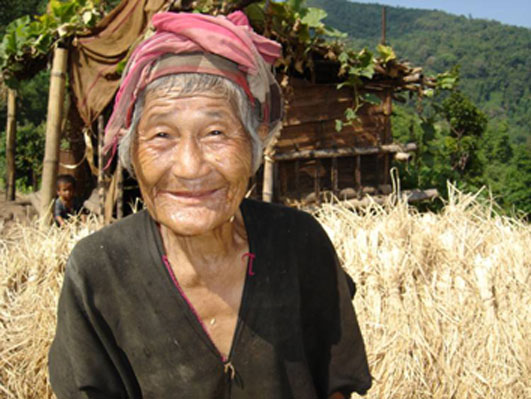A majority of households in Burma are constructed from bamboo; only two percent have flush toilets; a little over 16 percent have electricity; and only one in ten have running water. Just a third of Burmese have a telephone, while six percent have internet access in their homes. Millions more people drive a bullock cart than a car.
Released on Friday by the Ministry of Immigration and Population, Burma’s first census in over 30 years serves as a timely reminder of how undeveloped the country really is – and how much potential exists for growth.
Conducted nationwide from door to door between 29 March and 10 April 2014, and backed by the UN Population Fund (UNFPA), the results of the census were unveiled at a ceremony in Naypyidaw on Friday.
“It is my hope that the main census results will be interpreted correctly and will effectively inform the planning and decision-making processes in our quest for national development,” said Minister for Immigration and Population Khin Yi.
According to the data, Burma’s official population stands at 51,486,253, with women accounting for 51.78 percent. Seventy percent count themselves as rural; only 30 percent list themselves as urban dwellers.
[related]
Controversially, the Rohingya population was not included in the official census, but was instead estimated at a figure of just over a million. Other areas in Karen and Kachin states were also estimated because the population could not be counted due to armed conflict in those areas, the report said.
Rangoon Division is listed as the most populated administrative region with 7.36 million inhabitants, followed by Irrawaddy Division with 6.18 million, and Mandalay with 6.16 million.
The least populated regions are Karenni State, with just 280,000 people, and Chin State with 470,000. The poorest and least developed region in the country, the predominantly Christian Chin populace has the highest fertility rate in the country and a high infant mortality rate.
Life expectancy across the country stands at 63.9 years for men and 69.9 years for women.
There are 2,311,250 people living with a form of disability, including 1,249,737 with sight problems.
But it is the living conditions of most Burmese that will likely raise eyebrows among potential investors and development agencies. Some 51.2 percent of Burmese listed bamboo as their main material for housing, with just 15.9 percent saying their home was made of tile, brick or concrete.
Asked which source of energy they mostly use for cooking, 69.2 percent of families said they use firewood, while just 16.4 percent ticked electricity,
Nine percent of people say they drink tap water, though it should be noted that almost all tap water in Burma must be boiled and often re-boiled. Just 12.5 percent of Burmese say they use piped or tap water as the main source of non-drinking water for cleaning and bathing; the vast majority wash outside with wells or in lakes and rivers.



